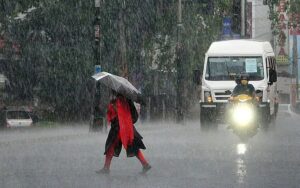Mumbai’s BMC Plans to Launch Second Girder for ‘Bow-String’ Bridge on 14th May

Mumbai's BMC Plans to Launch Second Girder for 'Bow-String' Bridge on 14th May
The construction of the bridge encountered several challenges, including opposition from the fishing community.
14th May 2024
BMC officials announced on Monday that the second girder of the ‘bow-string’ bridge, connecting the Coastal Road to the Bandra Worli Sea Link, will be launched in the early hours of 14th May. Officials stated that while the first girder was launched on 26th April, they are currently in the process of concretising the layers of the recently launched girder.
“The girder that was launched last month is for southbound traffic. This will take another one month to get completed and once it’s ready, vehicles will be able to take the coastal road directly from BWSL, which now is operational between Worli and Marine Drive,” said an official.
The arch-shaped girder, weighing around 2,000 metric tons and stretching 136 metres, was prefabricated in Haryana and then transported to the Nhava Sheva port in Raigad, situated 65 kilometres away from Worli.
Following its assembly at the Nhava Sheva port, the girder was transported to the Worli worksite via barge, arriving on Sunday evening. Civic officials stated that the launch will proceed only when tidal patterns are suitable for the operation.
“The second girder will be erected and launched in the same manner as the first girder, which he had launched from the sea and the process of launching will take around 2 hours. This girder will cater towards the northbound side, which is yet to become operational and the finishing work is expected to be completed by the end of next month,” the official said.
The construction of the bridge encountered several challenges, including opposition from the fishing community. They insisted on a 200-metre gap between the pillars for safer navigation, whereas the BMC proposed a 60-metre gap.
This disagreement led to a strike by the fishermen, prompting the BMC to revise the plan by eliminating one pillar to widen the passage for boats.
Given the impracticality of adding another pillar and the increased gap between the remaining ones, the civic body decided to adopt a ‘Bow-String’ girder bridge design.
These arch bridges are unique because they utilise strong, tensioned chords to connect the spans, eliminating the need for additional pillars. The chords form an arch-shaped girder externally, securely anchoring the ends of the bridge to the surface.






